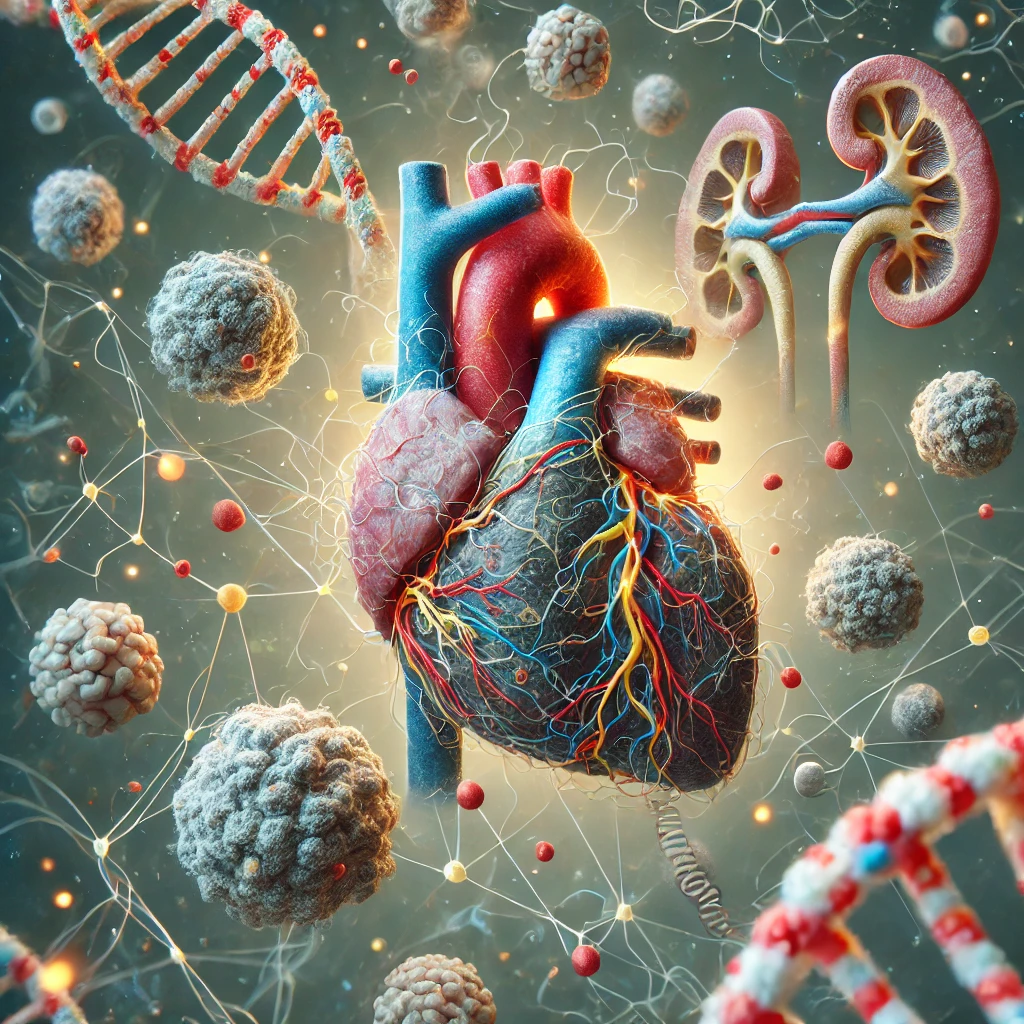Familial Amyloidosis: A Comprehensive Guide to the Inherited Disorder
Familial amyloidosis, also known as hereditary amyloidosis, is a rare but severe genetic disorder characterized by the abnormal accumulation of amyloid proteins in various tissues and organs. When misfolded, these proteins create amyloid fibrils that deposit in the organs, leading to dysfunction and potentially life-threatening complications. Understanding this condition is crucial for patients, families, and healthcare providers, as early diagnosis and management can significantly impact the quality of life and outcomes for those affected.
What is Familial Amyloidosis?
Familial amyloidosis is part of a broader category of diseases known as amyloidoses, characterized by the deposition of amyloid proteins in tissues. In familial amyloidosis, the condition is inherited andpassed down from one generation to the next through mutated genes.
The most common type of familial amyloidosis is transthyretin amyloidosis (ATTR), associated with mutations in the transthyretin (TTR) gene. The TTR protein, primarily produced in the liver, typically transports thyroid hormone and retinol-binding protein. However, when mutated, TTR becomes unstable and misfolds, forming amyloid fibrils that accumulate in organs such as the heart, kidneys, nerves, and gastrointestinal tract.
Types of Familial Amyloidosis
- Transthyretin Amyloidosis (ATTR): As mentioned, ATTR is the most common form of familial amyloidosis. It can be presented in two primary forms:
- Familial Amyloid Polyneuropathy (FAP): This form primarily affects the peripheral nerves, leading to symptoms such as numbness, tingling, pain, and weakness in the limbs. Over time, it can progress to autonomic dysfunction, causing gastrointestinal issues, sexual dysfunction, and cardiovascular problems.
- Familial Amyloid Cardiomyopathy (FAC): This form predominantly affects the heart, leading to restrictive cardiomyopathy. Symptoms include heart failure, arrhythmias, and, in severe cases, sudden cardiac death.
- Apolipoprotein AI Amyloidosis (ApoAI): This rarer form involves mutations in the ApoAI gene, leading to amyloid deposits primarily in the liver, kidneys, and heart.
- Gelsolin Amyloidosis: This type is caused by mutations in the GSN gene and primarily affects the eyes, leading to corneal lattice dystrophy and cranial nerves, resulting in facial palsy.
- Fibrinogen A Alpha Chain Amyloidosis: This form is associated with mutations in the fibrinogen A alpha chain gene, leading to kidney disease and renal failure.
Symptoms and Clinical Presentation
The symptoms of familial amyloidosis can vary widely depending on the organs affected and the specific type of amyloidosis. Common symptoms include:
- Peripheral Neuropathy: Tingling, numbness, and pain in the hands and feet, progressing to muscle weakness and loss of reflexes.
- Cardiomyopathy: Heart-related symptoms include shortness of breath, leg swelling, fatigue, and palpitations.
- Gastrointestinal Symptoms: Diarrhea, constipation, weight loss, and nausea due to autonomic nervous system involvement.
- Renal Issues: Proteinuria (excess protein in the urine), kidney dysfunction, and, in severe cases, end-stage renal disease.
- Ocular Symptoms: In some forms, amyloid deposits can lead to eye problems, such as corneal dystrophy.
Because familial amyloidosis can mimic other more common conditions, it is often misdiagnosed or diagnosed late, which can delay appropriate treatment.
Diagnosis of Familial Amyloidosis
Early and accurate diagnosis is critical in managing familial amyloidosis. The diagnostic process typically involves a combination of the following:
- Family History: A detailed family history can help identify the hereditary nature of the condition.
- Genetic Testing: This is the definitive test for diagnosing familial amyloidosis. It involves analyzing DNA for gene mutations that cause amyloidosis, such as TTR, ApoAI, GSN, or fibrinogen A alpha chain genes.
- Biopsy: A tissue biopsy, usually of the abdominal fat pad, rectum, or affected organ, can confirm the presence of amyloid deposits through specialized staining techniques.
- Imaging Studies: Cardiac MRI, echocardiography, and nuclear imaging can assess the extent of organ involvement, particularly in the heart.
- Nerve Conduction Studies: These tests can help evaluate the severity of peripheral neuropathy in patients with FAP.
Treatment and Management
The treatment of familial amyloidosis focuses on managing symptoms, slowing disease progression, and improving quality of life. Treatment strategies may include:
- Medications:
- Tafamidis: This drug, approved for the treatment of ATTR, stabilizes the TTR protein, preventing it from misfolding and forming amyloid fibrils.
- Patisiran and Inotersen: These RNA interference (RNAi) therapies are designed to reduce the production of TTR protein in the liver.
- Doxycycline and TUDCA: These agents are being investigated for their potential to disrupt amyloid fibril formation and promote clearance.
- Organ Transplantation: In cases of severe organ involvement, such as advanced cardiomyopathy or renal failure, organ transplantation may be considered.
- Supportive Care: This includes physical therapy, pain management, nutritional support, and addressing specific symptoms related to the affected organs.
- Gene Therapy: Emerging research in gene therapy holds promise for treating familial amyloidosis by correcting the underlying genetic mutations.
Living with Familial Amyloidosis
Familial amyloidosis is a lifelong condition that not only affects the patient but also their family members, who may also be at risk. Genetic counseling is an essential component of care, helping families understand the disease’s hereditary nature and risks. Support groups and patient advocacy organizations can provide valuable resources and connect patients with others facing similar challenges.
It is also essential for patients and families to stay informed about the latest research and advancements in treatment. Participation in clinical trials may offer access to new therapies and contribute to the broader understanding of this rare condition.
Conclusion
Familial amyloidosis is a complex and challenging condition that requires a multidisciplinary approach to care. Early diagnosis, appropriate treatment, and ongoing support are essential for managing the disease and improving outcomes. Advances in genetic testing and therapy offer hope for those affected, but awareness and education remain vital in battling this rare disorder.
For more detailed information and resources, visit the Amyloidosis Foundation or National Organization for Rare Disorders (NORD).
•

Leave a Reply
You must be logged in to post a comment.